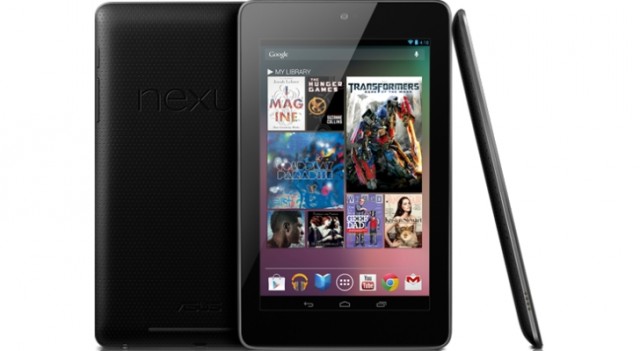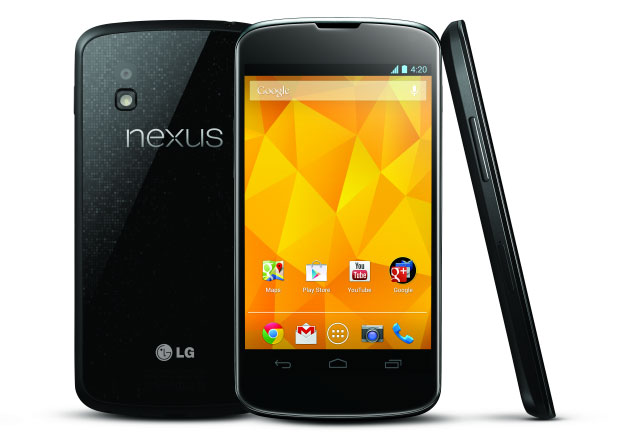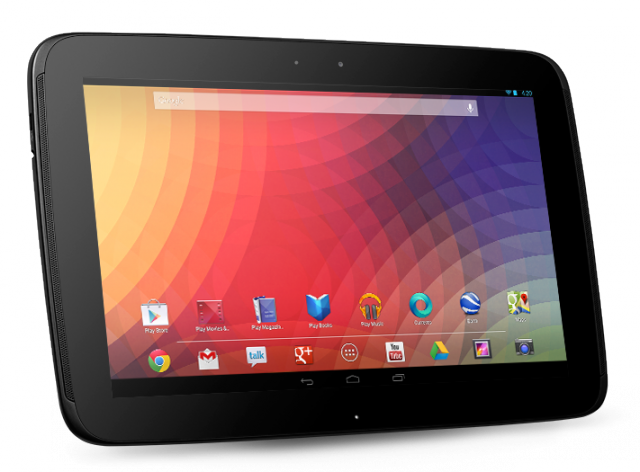In 2008, Google joined the mobile world with T-Mobile's G1 handset. Originally branded as the HTC Dream, the first-ever Google Android phone served as a predecessor of sorts to a line of bloat-free devices that would receive timely software updates, almost all of which are sold under Google's Nexus banner.
The Nexus lineup has since expanded to include tablets and handsets of varying sizes, and once or twice a year Google teams up with one of its partners to introduce new devices and to showcase new versions of Android. Each phone can be seen as an interesting look at the evolution of Android over the years as the company's mobile division has grown and the hardware Android runs on has changed and improved. All of the Nexus devices have played a pivotal role in Android's history by introducing new software iterations and hardware standards across the board, and they keep the rumor mill churning for months on end in between developer conferences and surprise Google announcements.
In the spirit of this week's Google I/O developer's conference, let's take a step back in time and go through some of those devices to see how they helped increase Google’s reach among smartphone users and application developers. We’ll look at the devices that have been launched throughout the past few years and briefly touch on those slated for the future, too.
Nexus One

The first officially branded “Nexus” phone succeeded the original G1 handset. Released in January 2010, the Nexus One was also manufactured by HTC and featured some very impressive specifications for its time, like a 1GHz Qualcomm Scorpion processor with an Adreno 200 GPU and 512MB of RAM. It also had an AMOLED screen, 5MP rear-facing camera, and a trackball that allowed users to scroll through content without having to touch the screen. The Nexus One included Android 2.1 Eclair out of the box, though it was promptly updated to Android 2.2 Froyo—the first handset to receive the update—and Android 2.3 Gingerbread.
Initial reviews praised Android’s multitasking capabilities, Gmail’s multiple account settings, and the operating system’s voice-to-text functionality. But it wasn't free of issues: following the 2.3.3 Gingerbread update, users complained that the battery pack on the One wasn't enough to handle the software’s idle power consumption. The software update also caused Google Voice to inexplicably break on some Nexus One handsets. The device was discontinued on July 19, 2010, and Google eventually ceased support for existing handsets because the included Adreno 200 GPU couldn’t keep up with the 2D acceleration engine in Android 4.0 Ice Cream Sandwich.
Nexus S

The next Nexus phone was manufactured by Samsung and launched in December 2010 to help promote Android 2.3 Gingerbread. Unlike the Nexus One, which was sold directly to users through Google’s website, those interested could pick up the Nexus S through retail partners like Best Buy. The handset was a bit bigger than its predecessor and featured a 1GHz single-core ARM Cortex-A8 processor, a PowerVR SGX 540 GPU clocked in at 200MHz, and 512MB of RAM. The Nexus S could also be used as a Wi-Fi hotspot and was the first Android phone to have an NFC chip. The trackball also went away in favor of a stylish, curved glass screen described by Google as a “Contour Display.”
The Nexus S wasn't a great seller at first, according to Android Central, until six months after its arrival when Google introduced a version on Sprint with WIMAX data capabilities. Still, some users complained about the fact that there was no expansion slot, that the processor was a bit dated at the time, and that it didn't feature 4G or HSPA+ support.
The last Android update available for the Nexus S was Android 4.1, the first version of Jelly Bean, which was introduced at last year's Google I/O.
Motorola Xoom

While it wasn't a "Nexus" device per se, the Xoom is still a "Google Experience Device" that was developed by pre-acquisition Motorola in partnership with Google and (for a time) received prompt access to Android updates. It was the flagship device for Android 3.0 Honeycomb, the first tablet-ready version of the operating system, and Google continued to support it up through the release of Android 4.1 last year.
The Motorola Xoom was introduced by the company at CES 2011 and fared relatively well among reviewers, but the fact that applications weren't yet compatible with Honeycomb and the Xoom's larger screen left a bit to be desired, and the Honeycomb software itself needed a little extra time in the oven (as noted in our review). There were also some frustrations, according to PC World's review of the device, regarding the Xoom's graphics and video rendering.
Galaxy Nexus

In November 2011, Android’s market share was increasing across the board. At the time, 57 percent of new purchases were Android handsets, with Samsung's Galaxy S II holding one of the top spots alongside the Galaxy S 4G.
The Galaxy Nexus, also manufactured by Samsung, debuted that winter. Inside, it featured the Nexus lineup’s first dual-core chip, a 1.2GHz dual-core OMAP 4 SoC from Texas Instruments, and 1GB of RAM. It came with Android 4.0 Ice Cream sandwich. It included support for MHL through its micro-USB port, which allowed users to output 1080p video to an HDTV. The new version of Android enabled the Galaxy Nexus to omit physical navigational buttons. Instead, it used persistent on-screen software keys.
Initial reviews cited a mediocre battery life, but Google has continued to support the phone all the way up through Android 4.2.2, the most recent version as of this writing.
Nexus 7

The Xoom was a full-fledged Google Experience Device, but this 7-inch tablet by Asus was the first tablet to carry the Nexus branding. The Nexus 7 brought stock Android to the 7-inch form factor pioneered by the Samsung Galaxy Tab and popularized by Amazon's Kindle Fire (which runs on Android but is catered more toward Amazon’s ecosystem). Its wallet-friendly $199 starting price didn't hurt, either, and it remains the cheapest way to buy into the Nexus family.
The Asus-manufactured tablet comes with a 1.2 GHz quad-core Nvidia Tegra 3 processor, 1GB of memory, and a front-facing camera. It was previously limited to 8 or 16GB of storage, though Google discontinued the 8GB version in October of last year and launched a new 32GB version (and a cellular-enabled version) in time for the holiday season.
Nexus Q

The Nexus Q was neither a smartphone nor a tablet, but it was something—at one point. The idea behind the Q was that the media-streaming device would act as a bridge between Android and your living room. It could be connected to an HDTV or stereo system and play music or video content via Google Play, and it ran a custom version of Android based on Android 4.0 Ice Cream Sandwich.
Though Google touted it heavily at last year's I/O conference, it was delayed because of negative feedback from users. Many had complained that it was devoid of features found in competing devices. Google sent out free devices to those who had pre-ordered, and eventually it was listed as unavailable in the Google Play store. It's entirely possible that we'll never hear from it again.
Nexus 4

After a torrent of rumors flooded the Internet, the LG-manufactured Nexus 4 finally debuted in late 2012. As the current Nexus handset, it's fueled by a quad-core 1.5GHz Qualcomm Snapdragon S4 Pro SoC with an Adreno 320 GPU and 2GB of RAM. It's also the first handset to come with Android 4.2 Jelly Bean right out of the box.
The Nexus 4 launched with some issues. It quickly sold out at launch and new devices didn't come in on time because of manufacturing snafus. Google's United Kingdom and Ireland Managing Director Dan Cobley even apologized for the shortage on his Google+ profile, stating that erratic and scarce supply contributed to the delay in handset shipments. A month later, LG spoke out, insisting that there were no issues with the Nexus 4 supply chain.
There were also problems with the Nexus 4 hardware. The device's chassis is covered entirely in Corning Gorilla Glass 2, which some complained made it highly susceptible to scratches and cracks. The device also generates a considerable amount of heat, which we noted is due to the fact that it lacks the power management settings that were featured in the LG Optimus G, the sister phone to the Nexus 4. Many were disappointed by the smartphone's lack of LTE connectivity, though recent rumors suggest that Google may push through a CDMA and LTE-compatible variant at this week's developer's conference.
Nexus 10

Not content to limit itself to the 7-inch niche, Google announced its first 10-inch Nexus tablet in partnership with Samsung, alongside the Nexus 4 and the 32GB reprise of the Nexus 7. Like the Nexus 4, it ran Android 4.2 Jelly Bean, but it had a 1.7GHz dual-core Samsung Exynos 5250 ARM Cortex-A15 processor powering a 10.1-inch display. At 300 ppi, it featured more pixels-per-inch than the Retina iPad, but we thought its viewing angles and screen colors weren't quite as good. The lack of expandable storage here (and in all of these Nexus devices) irks those who want the stock Android experience but don’t want to be limited in gigabytes.
The future of Nexus
The future is certainly nigh, and this week’s Google I/O will undoubtedly expand on the platform (and closely related products, like Google Glass and even Chrome OS). For now, we’re expecting an incremental update to the Nexus 4, similar to what Google did with the Nexus 7 last winter. However, there have been leaks—or perhaps just very eager wishlists—pointing to another LG-manufactured Nexus 5, this time featuring a 5-inch, 1920x1080 pixel IPS display, as well as a 1.9GHz quad-core Snapdragon 800 CPU, which hails from the family of SoCs announced by Qualcomm earlier this year at CES. We’re also leaning on rumors that Google will announce a new Nexus 7 tablet device to launch this summer.
But perhaps we should temper our expectations in light of recent news, straight from new Android head Sundar Pichai, who said that Google I/O would be less about launching new products and more about helping developers actually develop for Android (and Chrome OS). This hasn't stopped speculation about new hardware, but it's possible that Google's announcements will be more about features and incremental updates to its hardware rather than pushing forth entirely new products. Keep an eye on our liveblog coverage to find out for sure.
reader comments
39